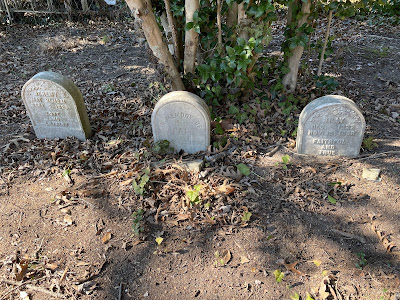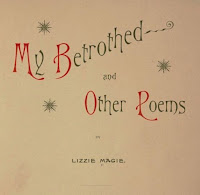A few weeks ago, I took a quick excursion during lunch to a cemetery that is rarely open to the public without special permission. Since I have a research project connected to this place, I wanted to snap a few pictures of some specific graves. Cemeteries are rarely quick excursions though and my fella says that I am always finding a mystery. On this particular visit, I had a graveyard and literature nerd moment.
I went to Pet Memorial Parks, LLC, in Henrico, Virginia. I parked, got out of my car, and as I looked over, there were a few graves on the edge of the cemetery. The names seemed familiar. Could these be Ellen Glasgow’s dogs? Without doing any research, I knew that the years would be about right, and I knew her dogs’ names. And, I believed that her dogs had originally been buried here.
The cemetery did not have records about Jeremy or Billy, which I have now supplied them with, but they confirmed that Pal, the middle grave, was one of Ellen Glasgow's dogs. Researching and collaborating for the win!

There is a mystery here, and I have been researching to find answers. I will note that I doubt many people care if I find answers or not, but I care and that’s what research is all about.
I’ve been trying to find more sources, which led me to Virginius Dabney’s Across the Years (1978). Dabney wrote the obituary for Ellen Glasgow’s dog Jeremy for the Richmond Times Dispatch. A copy of the obituary is included in the book’s appendix. In his book on page 169, it reads that when Jeremy died in 1929, he was buried in the garden. But this doesn’t seem to be where the story ends. The local legend has always been that in Ms. Glasgow’s will, she requested for the bones of her dogs to be reinterred and buried with her in Hollywood Cemetery. Tour guides still share this legend. I know I've shared it before. Numerous books cite the legend but I wanted to know more.
I’m curious about how the legend started but I’m more interested in determining if there is, in fact, any reason to believe that the dogs’ remains actually were moved.
In 1934, Glasgow purchased six grave plots at Pet Memorial Park and "some of her dogs were buried there" and some were moved from her garden to the cemetery. But which dogs? As you can see from the screen shot, I only had access to a short preview of E. Stanley Godbold’s 1972 book Ellen Glasgow and the Woman Within. Godbold is a historian and his first book was focused on Ellen Glasgow. I purchased a copy of the book since I could not see more details through Google Books, which certainly left me with a cliffhanger!
 |
| The graves of some of Ellen Glasgow's dogs |
I also found mention of the dogs being disinterred from Pet Memorial Park so that they could be buried with her in 1945 upon her death in Christine Quiglry’s The Corpse A History (2015). There was no footnote that I could see from the preview so I would need to access the full text to find citations if I really thought it was a viable text, which I don’t think it is. I’m sure it just perpetuates the rumors.
So while I am waiting for the Godbold’s text, which is somewhat important, I contacted the cemetery to see if they had records. As you can imagine, old cemetery records go missing. The same is true for an old pet cemetery. Fortunately, the current owner has been in contact with the daughter of the original owner and I have been able to start a correspondence and receive more information.
This is where I am. A somewhat clear answer- no, the dogs were never dug up along with more gruesome details that I plan to include in an article that I will be working on. For now, I’m enjoying the mystery and you fine readers now know that I haven’t fallen off the planet.
And not exactly a coincidence, I visited Ellen Glasgow's grave in Hollywood Cemetery last week for a photoshoot. A photographer from Richmond Magazine wanted to take a few pictures of me there for an article the magazine is doing about my book, Women Writers Buried in Virginia. In honor of my recent mystery, I wore my Frankenweenie brooch by Lipstick & Chrome.

08%20Sep%201960,%20Page%206.jpg)























